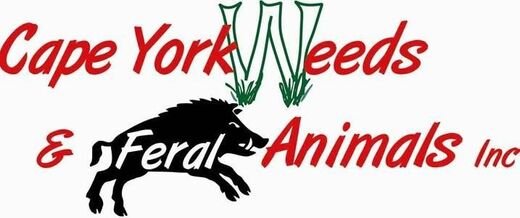South Endeavour Trust Strategic Gamba Grass Control 2016 Report
Report for 03/03/2017 to 05/05/2017
We were asked by the director of the South Endeavour Trust, Mr Tim Hughes to continue to follow up with a comprehensive Gamba Grass control program at Alkoomie station, Cooktown.
This will be our second year being involved with the South Endeavour Trust.
We were to work through their manager, Mr Darryl Paradise.
Travelled to Alkoomie Station to conduct follow up of a Strategic Gamba Grass control program.
This program is a part of a systemic control program for the South Endeavour Trust.
Gamba grass is classified as Restricted Matter Category 3 under the Biosecurity Act 2014.
The program was conducted for by one operator and equipment for a total of twenty-nine man days over a seven-week period. While most of the control was carried out by a single team member, we had a second operator’s help occasionally, when available.
Liaised with the Director and the on ground manager of the South Endeavour Trust.
South Endeavour Trust were keen to fulfil their obligations under the Biosecurity Act.
A strategic survey and control program was designed and established.
Gamba Grass is classified as a high priority weeds for control on the South Endeavour Trust Pest Management Plan.
A survey was carried out to determine the where and how the control work was to be undertaken.
The gamba grass surveyed and is quite thick and covers huge areas, especially along gullies, river, river flats and grazing paddocks.
The majority of gamba grass is very well established, with some of the grass being over three metres tall.
Gamba is intertwined in amongst the blood wood and iron wood trees everywhere.
If not controlled, late season fires have the potential to wipe these big trees and the native grass species that are there.
This affects all native species and the natural ecosystems that are in this catchment area.
The gamba grass has the potential to spread further along the river and gully systems.
Vehicles, humans and stock, travelling along these areas also have the capacity to spread it out further from these areas.
Because of the sheer size of these areas, CYWAFA_ INC developed a comprehensive Strategic Control Plan.
As resources are limited, it was decided to concentrate on all the trafficked areas and watering points throughout Alkoomie.
It will also provide a buffer zone to limit the spread of seed by wind and water.
Other pest species declared under the Biosecurity act were controlled as we went along.
All of the pest species identified on the pest management Plan were controlled.
Other species controlled includes Hymenachne, Sicklepod, Grader Grass, Rubber vine, Coffee Senna, Sida Win Cassia, and Hypti.
Regular meetings were conducted to coordinate the control activities. The South Endeavour Trust Manager, Darryl Paradise liaised with us and let us know what was wanted.
Gamba Grass had been planted as a part of pasture improvement by previous land managers, as it was run as a cattle station.
Conducted a tool box talk and carried out a risk assessment before any control work was commenced.
As the area was very wet and access roads washed out there was only limited access to the bigger areas on the flat at Alkoomie.
Peripheral areas such as the Broken Dam, Old Homestead and cattle yards will have to be accessed when it dries up.
We commenced spraying well before the gamba grass had started to flower and seed, while it was still at small growth stage
By the time we had finished the control program we were tasked with, the remaining gamba grass had seeded and the seed was viable.
Even though this was the case, we got rid of the mature parent plant so that it could not re grow, as it is a perennial species.
Therefore, reducing the density of the Gamba grass regrowth was the priority.
By controlling the some of the gamba before seeding we were able to start reducing the viable seed bank along the strategic areas we sprayed.
While carrying out the Gamba Grass Control Program, we received the odd storm and rainfall event, which hampered our ability to control the gamba.
This set the program back a bit as we had to wait until it was dry enough to access some areas.
Monitoring points were set up, using easily identifiable natural features as scale object.
A series of gamba grass surveys were carried out on all the areas we could get to,as it was still too wet in a lot ofareas .
Everything that was surveyed was mapped, including the spraying that was completed.
Over thirty one point four hectares of strategic control was carried out.
There was as far greater area surveyed to find out where the Gamba Grass actually was.
All areas of control work were mapped using the GIS and QGIS systems.
All data has been sent to the South Endeavour Trust.
The data and herbicide usage sheets were also completed.
It was advised to let the controlled gamba grass areas to naturally mulch down, rather than burn. This would provide a blanket of mulch which would suppress seedling regrowth from the seed bank. Further reducing the amount of seed in the ground.
It would also stop the seedlings, which are very light and feathery, being spread over vast areas by the fire front.
With less gamba regrowing from seed it would take far less resources to spot spray anything coming up.
Cape York Weeds and Feral Animals Incorporated spent as much time as possible controlling all trafficked areas, watering points, and high conservation areas.
A follow up control program needs to be implemented to further protect and reduce the impact of Gamba Grass in these fragile ecosystems and habitats.






